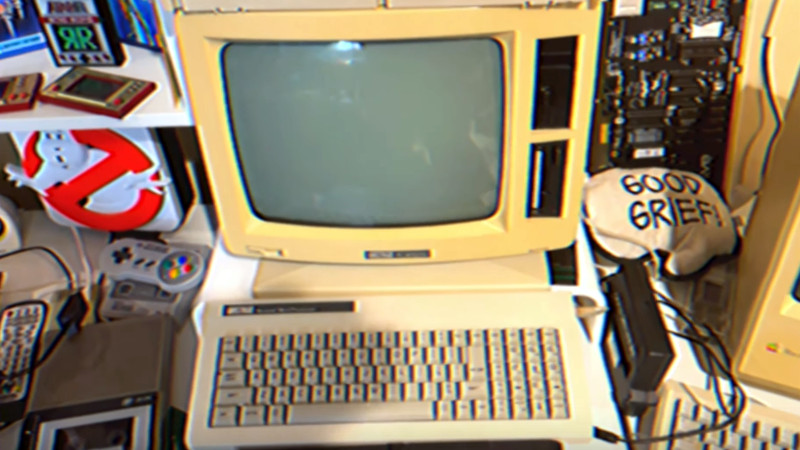If Clive Sinclair’s genius in consumer electronics was in using ingenious hacks to make cheaper parts do greater things, then his Amstrad competitor Alan Sugar’s was in selling decade-old technology to consumers as new and exciting. His PCW series of computers are a great example, 1970s CP/M machines smartly marketed for late 1980s home offices. They were a popular choice at the time, and [Retro Recipes] has one. In a video filmed in period standard definition he’s taking us through a repair to its Gotek drive, and then a RAM upgrade.
The repair and upgrade are fairly straightforward, the former being a failed OLED screen on the drive and the latter being the installation of a bank of DIP memory chips. The interest lies in how they cost-minimised a CP/M machine as a consumer product. The board relies heavily on custom chips as you might expect, and there’s a brief glimpse of one of those unusual 3″ floppy drives. The power supply is part of the monitor board as was often the case with Amstrad machines, and the whole thing is about as simple as it can be. The full video can be found below the break.
We’re guessing that particularly in the UK there will be plenty of PCWs still languishing in dusty attics, but surprisingly given their popularity at the time we see less of them that might be expected. There has been a significantly upgraded model on these pages though.
















Wonderful! 💚 Where I live the PCW was known as the Schneider Joyce!
This electric video typewriter was so underrated.
It could run CP/M-80 and had hi-res graphics comparable to Hercules (MGA) on IBM PC (720×256 pels vs 720×348 pels).
There also were a few, but fine third-party accessories that could be attached.
Mice, joysticks, handy scanners, scanner add-on for the printer, serial/parallel module, RAM module etc.
With The Desktop Publisher it became a little DTP workstation, even!
It included the popular AMX Mouse, which also was supported by the GUI “AMX Desktop”.
Nowadays, SymbOS and Samaruc can be run, too!
I just wonder if AutoCAD-80 1.2 ever ran on the PCW, considering that the PCW had supported GSX..
Were they actually popular though? Certainly not a home computer, they were more likely to be found in an office. And none of this ‘everyone gets one’ rubbish. It’d be the secretary’s, and theirs alone.
Didn’t do the Hewson (?) software house use PCWs as development systems, though?
I vaguely reading about this in an article in an old computer magazine I read a while ago.
I could imagine that programming on a PCW was more fun than on the CPC.
They were very, very popular. They worked well, they had a huge screen for the day, extremely powerful word processor, and a keyboard that tied in with the word processor’s functions that made it easy to use. I was on the dev team, and we used them extensively in house for coding and documentation because 90×32 monitor.
Well they sold eight millions or so PCWs over its lifetime.
Yes, they were office machines first and foremost, I bet they were popular for small businesses. Certainly all the small business applications were available for it, and the magazines were heavily focussed on that aspect. Not just a typewriter. And you could play batman during lunch.
But you’d be sad if your home computer as a kid was a PCW!
My wife and I had a pair of PCW9512’s, which were surplused in the US after their introduction. Part of Amstrad’s success was their focus; they were created and marketed not as PC’s, but first as word processors, and you didn’t need to boot first to CP/M to run LocoScript. It had its own bootable disk. And there was an almost Apple-like synthesis of hardware and software, with the word processor perfectly complementing the keyboard and display. (The display wasn’t WYSYWYG but could display an amazing range of character maps, and was organized to maximize workflow.) LocoScript on the PCW is hands down the best word processor I have ever used for practical manuscript composition. And yes, if you wanted to, you could boot CP/M and run a whole complement of software that way. It wasn’t meant as a general purpose personal computer, but was a nearly perfect home business machine. I was very sad when mine got terminal cancer of the funny disk drives.